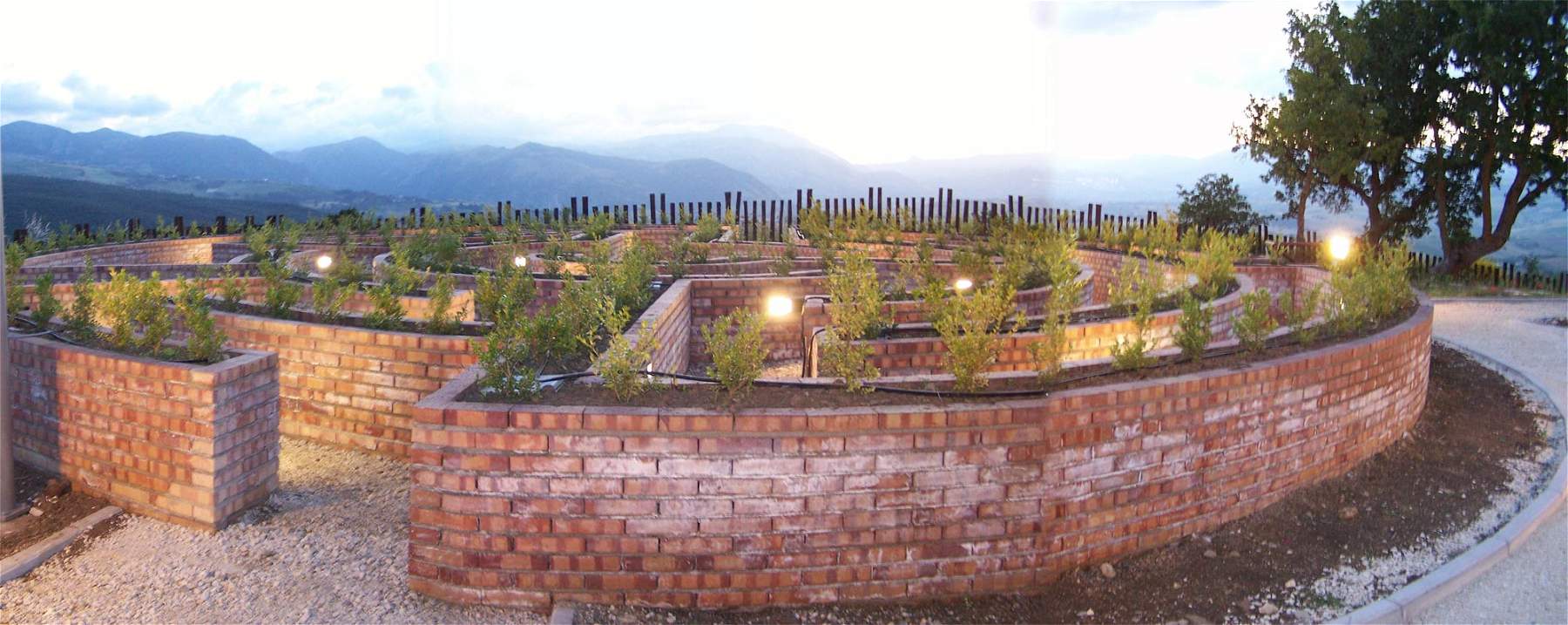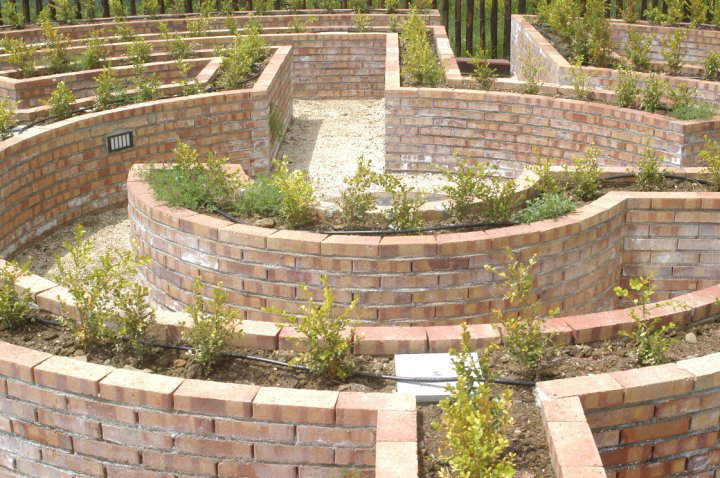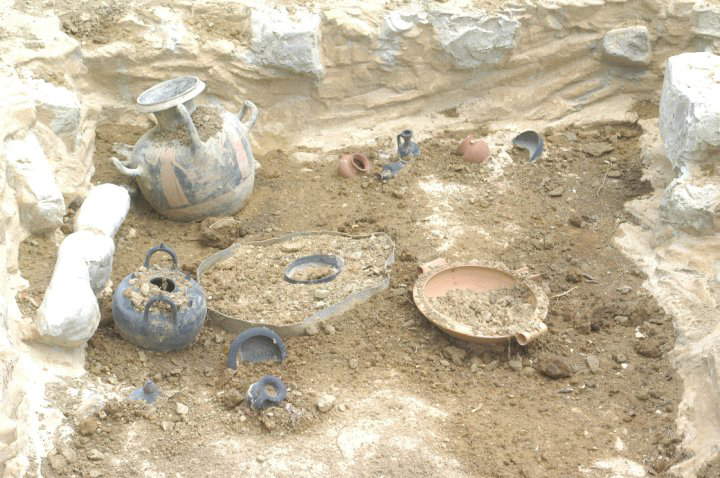The only, large outdoor labyrinth in Basilicata is located at an archaeological site. About fifteen kilometers from Potenza, along the Appian Way, is the village of Baragiano, where two and a half thousand years ago a king of the peuketiantes, a population of Apulian stock that inhabited pre-Roman Lucania , lived. The ruler, whose name we do not know, was buried with his rich trousseau of weapons and regal symbols in a tomb near today’s town.It is at the site of this 6th-century B.C. burial that theBasileus Archeopark, an archaeological park of an educational nature (currently open occasionally: website for information), through which, along a route that includes a visit to the king’s tomb (“Basileus” in Greek means precisely “king”), evocative set-ups, scenographic locations, reconstructions of environments, a simulation of an excavation that faithfully reproduces the burial of the basileus, and then music, games and even a garden, intends to make the public (especially that of the young and very young for whom the set-up was imagined) discover the rich ancient history of this territory, with particular reference to the events of the peuketiantes.
The Ministry of Culture defines the Basileus Archeopark as a “gateway for a journey into history and myth through Lucanian archaeology,” which “proposes different keys of interpretation, cultural, scientific, educational and playful to bring the public closer to the knowledge of antiquity and history,” also with the help of technology (a virtual tour guide is also present).
One of the main features of the Basileus Archaeopark is the presence of a labyrinth, which has been enriching the site since the year the Archaeopark itself was opened to the public, 2008. Like several labyrinths, it has a circular shape: it has a diameter of eighteen meters, its layout is rather simple and presents no difficulties, the walls are made of brick , and the walls are filled with shrubs and saplings that soften its appearance.



It might seem like a purely decorative element, yet there is a connection between the basileus buried in Baragiano and the labyrinth. In fact, the king’s grave goods were filled with ceramics depicting stories from Greek mythology, including that of Theseus, the Athenian hero who, on his way to Crete to kill the Minotaur after volunteering, went into King Minos’s labyrinth, built to trap the half-man, half-bull animal, and with the help of Minos’s daughter Ariadne, who gave him a thread to unravel through the maze’s meandering maze so that he would not get lost, managed to find his way out. The peuketiantes were particularly attracted to the myth of Theseus: for the ancient cultures that were in contact with Greece, the figure of Theseus was a symbol of reason winning against brute force, of culture prevailing over incivility, of the triumph of life over death.
The labyrinth thus succeeds, meanwhile, in evoking these stories handed down by mythology. But not only that: the labyrinth of the Basileus Archaeopark may itself have a symbolic function. It is a way of establishing a connection between the visitor and antiquity, it is a means of connecting those who enter the site to the unsolved (and some of them perhaps insoluble) mysteries that surround it, it is a symbol of how complicated the path of knowledge is, especially if the object of investigation is an ancient civilization. To walk the labyrinth of the Archeopark, therefore, is to enrich one’s experience of the archaeological site.
The route is aimed especially at an audience of children and young people, who may be experiencing walking inside a labyrinth for the first time, or visiting an archaeological site for the first time. In fact, the labyrinth constitutes one of the activities with educational purposes at the site: inside, the visitor encounters, imprinted on the ground, fragments of images from the Vase of Heracles found in Baragiano: the task of those who walk the labyrinth is to observe these fragments, which are placed in the center of the path in a single image. The labyrinth, therefore, is also meant to be for the young audience of the Archeopark a kind of gateway to a journey into the history and myth of the ancient land of Lucania.
 |
| A labyrinth in the archaeological park: the Basileus Archaeopark in Basilicata |
Warning: the translation into English of the original Italian article was created using automatic tools. We undertake to review all articles, but we do not guarantee the total absence of inaccuracies in the translation due to the program. You can find the original by clicking on the ITA button. If you find any mistake,please contact us.